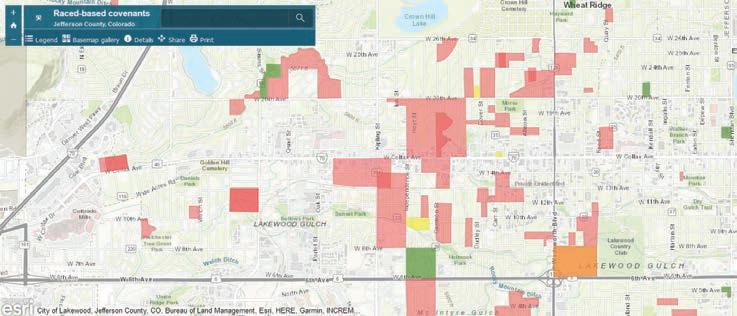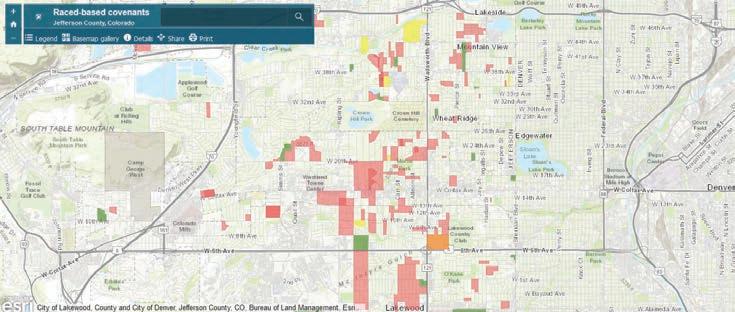
2 minute read
of racial separation in metro Denver
BY ELLIS ARNOLD EARNOLD@COLORADOCOMMUNITYMEDIA.COM
In 1967, Black Americans were mired in “the long, hot summer.” Frustrations over poverty, unemployment, discrimination and myriad other issues spilled into the streets, leading to clashes with police and arrests in many places, including Denver. e widespread tensions over race left President Lyndon B. Johnson searching for answers.
So, he issued an executive order for a report that would detail what caused the chaos. He wanted it to answer a crucial question: How can the country prevent more unrest in the future?
When the report arrived seven months later, it laid out hundreds of pages of analysis and recommendations for improving race relations in America.
But its message was best summed up in a sentence:
“To continue present policies is to make permanent the division of our country into two societies: one, largely Negro and poor, located in
A part of a map that shows housing areas where racially restrictive covenants were located in Je erson County. This part of the map includes part of Lakewood, Wheat Ridge and Golden. Red areas had the covenants, green areas did not and yellow areas were unclear. See the full map at tinyurl.com/Je coRacialCovenants.

‘The American dream has decreased in relevance’
James Truslow Adams, a writer and historian, is credited with coining the term “the American dream” in 1931 — early in the Great Depression — in his book, “ e Epic of America.”
“ e American Dream is that dream of a land in which life should be better and richer and fuller for everyone, with opportunity for each according to ability or achievement,” Adams wrote. “It is not a dream of motor cars and high wages merely, but a dream of social order in which each man and each woman shall be able to attain to the fullest stature of which they are innately capable, and be recognized by others for what they are, regardless of the fortuitous circumstances of birth or position.”
Carlson re ects on all of that. She said that people began to conceptualize how to get their American dream — go to college, get a good job and buy a home — in the postWorld War II era.
“ ere was this idea that you could have all of this,” Carlson said.
More Americans these days, she said, are de ning success on their own terms. More folks might see homeownership as a relic, even something that holds them back in life, rather than necessary for all of their needs and desires.
“Buying a home is probably the central cities: the other, predominantly White and a uent, located in the suburbs and in outlying areas.”




In other words, the issue of where people can live was at the heart of the report. It all ties into the American dream, the idea of a family owning a home, building wealth as that home increases in value over time and being able to live in whatever neighborhood a family can a ord without fear of discrimination.
Yet more than half a century later, that divide between Black and White residents continues to complicate the dream in many parts of America, including the suburban towns and cities that surround Denver. e divide is less stark and less known than it was in 1967, but its legacy is still alive in the metro area, where the Black population tends to live in Denver or Aurora, numbering in the tens of thousands in each city.
Elsewhere, Black residents number in the hundreds or just a few thousand while White residents make up strong majorities. White residents are 78% of the population in Arvada and 1% are Black. White residents are 80% of the population in Littleton and 2% are Black. White residents are 82% of the population in Castle Rock and less than 1% are Black.


